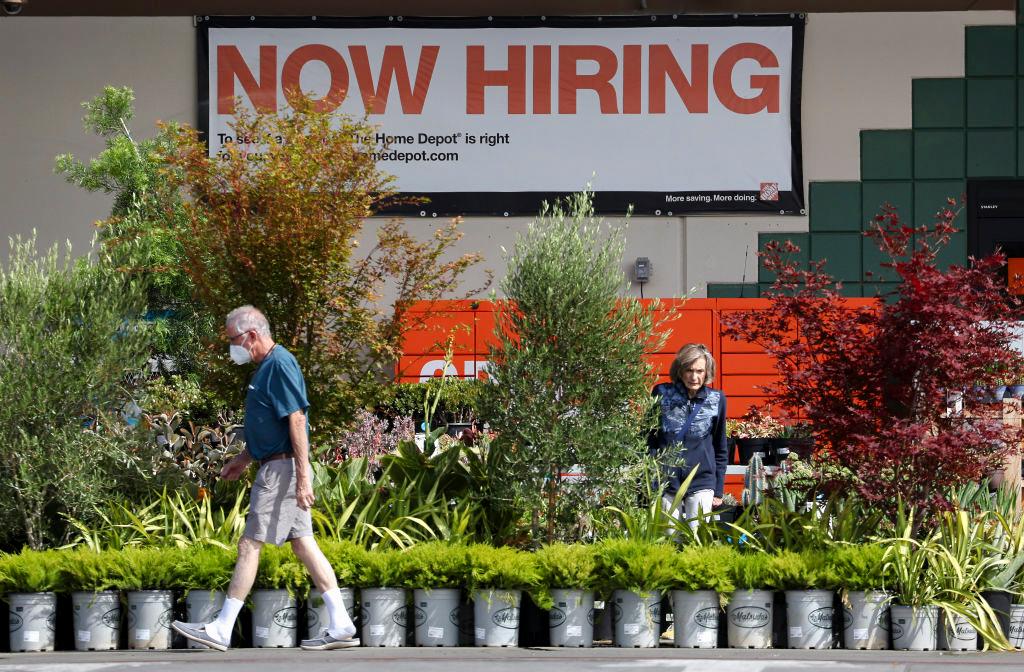Immigration to the United States—both legal and illegal—has soared over the past few years, and the influx of newcomers is altering the state of the national labor market.
Since late 2019, there has been a divergence between U.S.- and foreign-born employment levels, with the gap widening over the past year.
When the numbers are broken down by gender, they show that American men have been casualties of the downward employment trend in native-born workers in recent years.
In the 12 months ending in August, the number of U.S.-born male workers fell by 1.15 million. The labor force participation rate also eased to 65.6 percent from 66.2 percent a year ago.
American women lost 165,000 jobs. While the participation rate increased by 0.1 percent to 57.9 percent, it has yet to recover to the pre-pandemic level of 58.3 percent.
Conversely, foreign male workers gained 695,000 positions, with the labor force participation rate edging up by 0.1 percent to 78.7 percent. Foreign-born women obtained 546,000 jobs, bolstering their participation rate to 57.2 percent from 56.7 percent.
The research shows that from 1960 to 2006, the number of U.S.- and foreign-born 16- to 64-year-old less-educated males in the labor force increased by 15.3 million. But only 52 percent of the increase was represented by American males, “while the rest went to immigrant men.”
“It is clear that demand for less-educated male workers has not kept pace with the total population of less-educated men, at least when immigrants are included,” the report reads. “The result has been a huge decline in the labor force participation rate for the U.S.-born.”
Study authors identified various reasons for this trend, such as the growing welfare state that can incentivize unemployment, direct competition with immigrants, and evolving social norms.
“It is certainly the case that as the number of male immigrants in the labor force grew dramatically, the number of U.S.-born men out of the labor force also increased dramatically,” Center for Immigration Studies researchers said.
Researchers say 48 percent of those actively pursuing employment opportunities reported that “difficulty finding work” was the chief reason they were still looking. Health concerns were another factor for 16 percent of respondents.
The report also found that 67 percent cited obsolete skills, a lack of training, and poor work records as other causes of being out of work. This was followed by insufficient pay (45 percent), distance to work (43 percent), and poor or no health insurance offered (30 percent).

“Supporting prime-age labor force participation will be vital amidst a changing U.S. demographic and economic outlook,” researchers said. “Prime-age men who are out of the labor force encounter several long-term barriers to work, with health and disability issues being the most common.”
Andrew Crapuchettes, CEO of RedBalloon, suggested that one solution is for U.S. workers “to be willing to do the dirty jobs” again.
Other Immigration Labor Market Data
Immigration has significantly contributed to the solid U.S. labor market over the past few years.Of the roughly 158.8 million people who are employed, foreign workers represent 20 percent, totaling nearly 32 million. Since February 2020, the growth in the civilian labor force has come almost entirely from immigration.
“It is likely that both surveys include at least some undocumented immigrants. However, neither the establishment nor the household survey is designed to identify the legal status of workers,” the BLS stated.
Last year, the median weekly earnings of U.S.-born workers with post-secondary education were $1,602, slightly lower than those of foreign-born workers in the same category, who earned $1,637.
However, “a different story emerges” when assessing race and ethnicity, the think tank’s analysts noted.
Experts Discuss Immigration Trends
A chorus of experts, from Federal Reserve officials to private-sector economists, has alluded to the advantages of the immigration boom of the past few years, particularly for the labor market and the broader economic landscape.Job vacancies have been trending downward since the March 2022 peak of 12.2 million. Still, the number of job openings is higher than before the COVID-19 pandemic, totaling 7.67 million in July.
The labor force participation rate has yet to recover from before the economic crash during the pandemic response. It was 62.7 percent in August, down from 63.3 percent in February 2020.
Since early 2021, immigrant visas—employer-based visas and family-sponsored visas—have been issued at near-record levels every month. This, according to Torsten Slok, chief economist at Apollo Wealth Management, is alleviating the country’s labor supply challenges while also increasing the jobless rate.
“Maybe the reason why the unemployment rate is rising is because the government is gradually working through a Covid-related backlog of visa applications, which increases the labor supply,” he said in a daily note.
In July, the unemployment rate rose to 4.3 percent, the highest level since October 2021. It dipped to 4.2 percent in August.
The increase in immigration might have assisted in easing inflationary pressures, according to Fed Chair Jerome Powell.
While he noted that immigration is “neutral” for inflation in the long run, “it may actually have helped” in the short term “because the labor market got looser because there were more people.”
“But overall, in terms of the aggregate inflation, I wouldn’t say it’s a driver one way or the other,” Powell said at a Senate Banking Committee hearing in July.
Higher immigration added 0.1 percent to the gross domestic product growth rate in 2022 and 2023, and it is expected to do the same again this year. The regional central bank economists noted that if immigration levels normalize in the coming years, current economic growth trends will be unsustainable.
“The nation is in a sort of demographic autumn, and winter is coming,” they wrote in a July paper. “The retirement of the baby boomers and overall aging of the workforce, as well as low and falling birth rates mean population growth will become entirely dependent on immigration by 2040, as deaths of U.S.-born will outpace births.”







